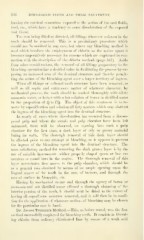Page 548 - My FlipBook
P. 548
546 DISCOLORED TEETH AND THEIR TREATMENT.
leaving the cervical cementum exposed to the action of the oral flnids,
food, etc., Avhich have a tendency to canse discoloration of the exposed
root tissue.
The root being filled as directed, all fillings wherever existent in the
tooth should be removed. This is a })r('liniinary ])roceduro which
should not be omitted in any case, but where any bleaching method is
used which involves the em])loynient of chlorin as the active agent it
becomes imperatively necessary for reasons which are exjilaincd in con-
nection with the description of the chlorin methods (l)age 547). Aside
from other considerations, the removal of all fillings preparatory to the
bleaching operation has a decided value in facilitating the process by ex-
posing an increased area of the dentinal structure and thereby })ermit-
ting the action of the bleaching agent over a larger territory of ingress.
When all fillings or softened tooth structure have been removed, as
well as all septic and extraneous matter of whatever character, by
mechanical process, the tooth should be washed thoroughly with dilute
ammonia water, or better with a hot solution of borax in distilled water
in the proportion of 5j to fsj. The object of this treatment is to re-
move by saponification and solution all fatty matters which may obstruct
the ingress of the bleaching agent into the dentinal structure.
In nearly all cases where discoloration has occurred from a decom-
posed pulp and where the canals and pulp chamber have been left
untreated, there will be observed, on opening into such a pulp
chamber for the first time, a dark layer of oily or greasy material
lining its walls. The thorough removal of this dark layer should
be cifccted prior to any attempt at bleaching, as it ajipears to prevent
the ingress of the bleaching agent into the dentinal structure. The
most satisfactory method for removing the dark greasy layer is by the
use of suitable instruments— either properly shaped spoon or hoe ex-
cavators or round burs in the engine. The thorough removal of this
layer necessitates free access to the pulp chamber, which should be
as a general rule obtained by means of an ample opening upon the
lingual aspect of the tooth in the case of incisors, and through the
morsal surface in bicuspids, etc.
Having by mechanical means and through the agency of borax or
ammonia and hot distilled water effected a thorough cleansing of the
interior portion of the tooth, it should next be dried to the extent of
having all superfluous moisture removed, and it Avill then be in condi-
tion for the application of whatever method of bleaching may be chosen
for the particular case in hand.
Dr. James Truman's Method.—This, as before stated, was the first
method successfully employed foi' bleaching teeth. It consists in liberat-
ing chlorin from ordinary chlorinated lime by means of a weak acid


